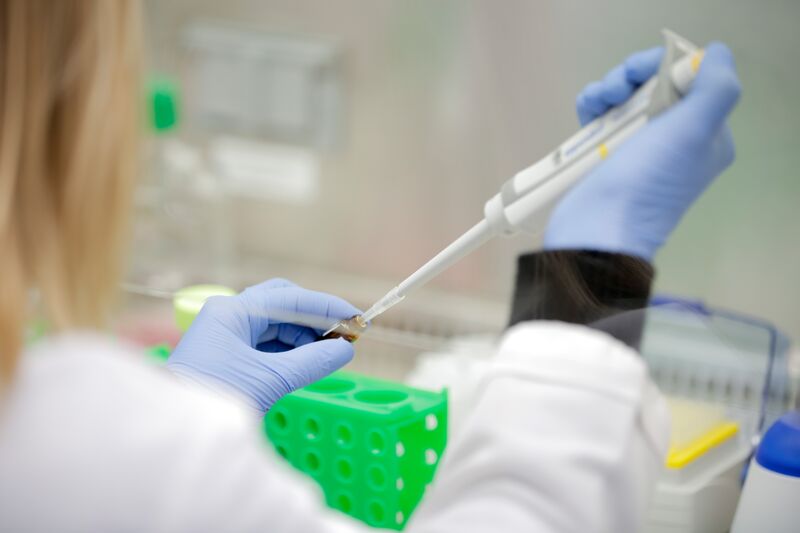For some women and most men with cystic fibrosis, getting pregnant the “natural” way can be difficult or even impossible. However, they can still have biological children through the use of assisted reproductive technology (ART).
ART includes
ART for Men With CF
Most men with CF (97-98 percent) are infertile because of a blockage or absence of the
If you are a man with CF who is interested in having biological children, the first step is to go to a
Once this
“My wife and I went to see a urologist where we learned that even though I was officially unable to have children through natural means, my CBAVD did not mean that I was sterile. According to the urologist, I needed a simple surgery to retrieve the necessary sperm. Even though a surgery that involved cutting a testicle didn't sound so simple to me, the surgery went well and my recovery was short. This procedure, coupled with our newfound knowledge, paved the way for my wife to undergo IVF.” -- David Cobb, adult with CF
In-Vitro Fertilization
Once you have discussed the implications of having a family and pregnancy with your CF care team and partner, the next step is to look into common methods and procedures.
One of the most common types of ART is in-vitro fertilization (IVF), or the process of manually combining an
Before you begin the IVF process, talk to your CF care team. CF can affect the
The IVF Process
Although the actual process will vary by clinic, IVF involves several key elements. Your doctor will begin by running basic tests to ensure that everything is OK regarding the sperm, the woman's estrogen levels, and the size of the ovaries. After that, the woman will start taking daily medications, typically through injection or orally, to help stimulate ovulation and increase the number of mature eggs that can be retrieved during the IVF process.
As the eggs develop, the fertility team will monitor the growth of your ovarian follicles through ultrasounds and blood tests. Depending on the results of these tests, your doctor may change the
Finally, you will receive a “
Success Rates
Although the likelihood varies, the success rates for IVF are typically between 20 and 40 percent. Due to the cost and emotional stress involved in the IVF process, this can seem rather daunting. However, as noted on resolve.org, these statistics often require greater context.
To find an IVF clinic near you or to use the patient predictor tool to evaluate your own chances for IVF success, visit sart.org.
Intrauterine Insemination
Intrauterine insemination (IUI) is an ART technique in which a catheter is used to place sperm inside a woman's uterus to facilitate fertilization. Also known as artificial insemination, IUI is intended to increase the number of sperm that reach the fallopian tubes and, therefore, the chance of pregnancy.
IUI is less invasive and expensive than IVF, but has also been shown to be less effective with a success rate between 5 and 25 percent. IUI is typically used in cases in which there is low sperm count, decreased sperm mobility, or issues with ejaculation. However, it can also be effective for treating fertility problems such as cervical scar
Before you begin IUI, it is important to talk to your CF care team, especially since IUI comes with a small risk of infection.
The IUI Process
Although IUI can be done without the use of drugs, the woman will typically begin by taking medications to stimulate ovulation prior to the procedure. Once you have begun ovulating and the eggs are mature, your partner or donor will provide a sperm sample that is washed and concentrated by selecting only the most active, healthy sperm.
Your doctor will then use a catheter to insert the sperm into the uterus and ask that you lie down for a while after the procedure. The entire process takes only a few minutes and causes minimal discomfort, although you may experience some cramping.
Donor Sperm, Eggs, and Embryos
If you are concerned about passing CF to your child, plan to become pregnant without a male partner, or have undergone several failed IVF attempts, using donor sperm, eggs, and embryos is a viable option for those who still wish to undergo pregnancy or carry a child. The cost and procedures will vary by clinic, but it is important to be aware of donor options and understand this possibility as you make your family planning decisions.
For more information about using donated sperm, eggs, and embryos, visit resolve.org or ask your CF care team if they can refer you to a fertility specialist. You can also learn more about choosing between using an egg donor and surrogacy.
Weighing the Pros and Cons
IVF is a lengthy and often emotionally demanding process, and there is no guarantee that it will end in pregnancy. For this reason, it is important to have a support system in place to help you through the emotional, physical, and financial challenges involved in IVF.
IVF is not typically covered under health insurance and on average can cost about $12,000-$15,000 per cycle. Therefore, making sure that you are financially equipped to take on these costs is an important step toward deciding if IVF is right for you.



